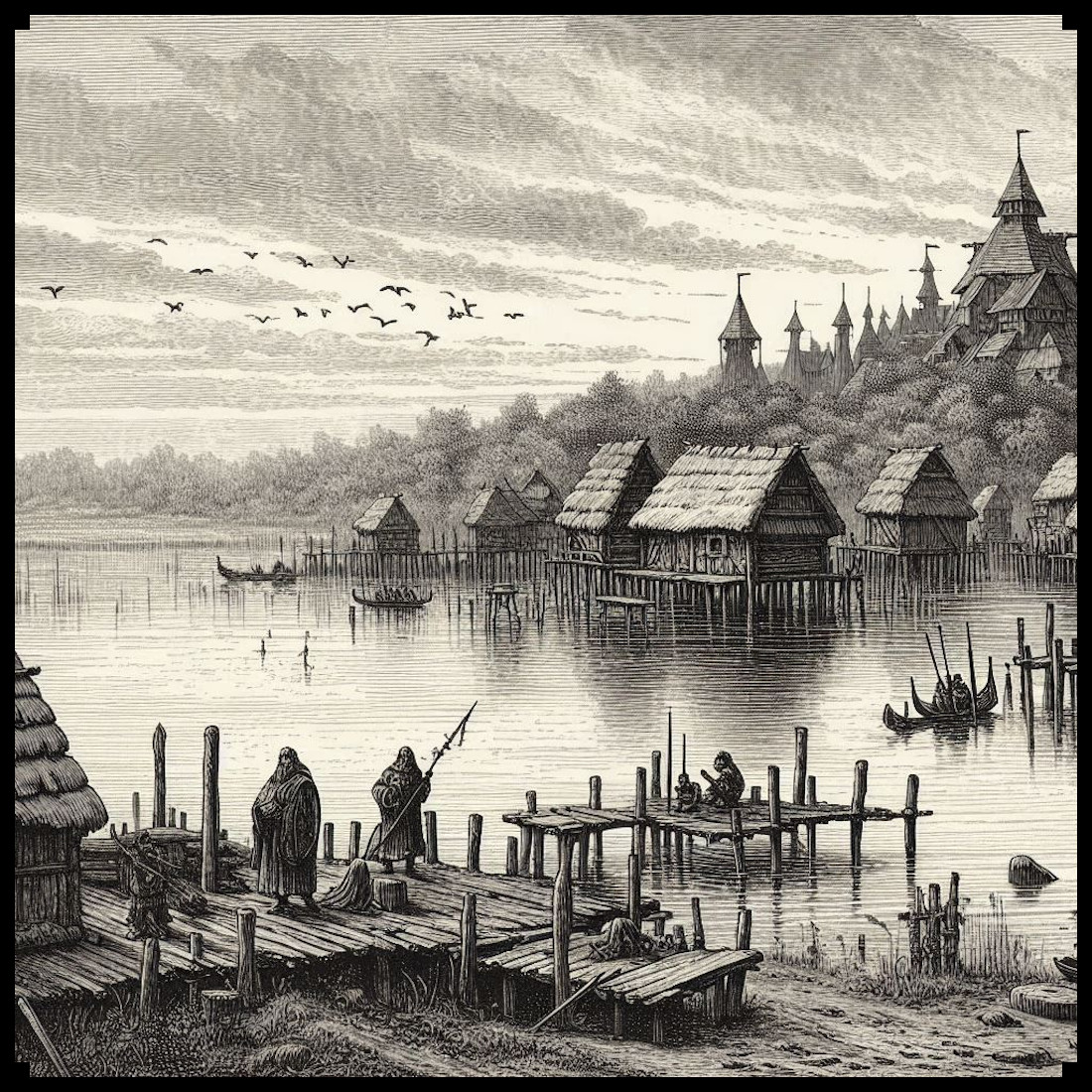
The Enchanting Cartography of the Marshes, Swamps, & Bogs – Vintage Assets Megapack
Fantasy and antique maps have always held a special allure, blending artistry with geography to create worlds where the mundane becomes magical. The Marshes, Swamps, & Bogs – Vintage Assets Megapack pays homage to this tradition, providing a rich array of elements that breathe life into fantastical landscapes. Let’s explore the historical, cultural, and symbolic significance of these wetlands and their representation in cartography.
BUY AND DOWNLOAD The Marshes, Swamps, & Bogs – Vintage Assets Megapack here :
The Formation and Symbolism of Wetlands
Marshes, swamps, and bogs are geographical areas characterized by saturated soils, standing water, and unique ecosystems. These wetlands form through processes such as river flooding, poor drainage, and high water tables. They play a crucial role in the environment, acting as natural water filters, flood protectors, and habitats for diverse flora and fauna.
Symbolically, wetlands represent mystery, danger, and life. They are often seen as places of transformation and hidden secrets. In many cultures, wetlands are associated with the mystical and the unknown, making them ideal settings for fantasy stories and maps.
Reeds and Marsh Grasses
In both ancient and fantasy cartography, reeds and marsh grasses are essential symbols of wetlands. These features denote areas rich in biodiversity but difficult to traverse. Historically, maps like the Tabula Peutingeriana – a Roman road map – used such symbols to indicate marshy regions, warning travelers of potential hazards. In fantasy maps, they add texture and realism to the depicted landscapes.
Lily Pads
Lily pads often adorn maps to signify calm, shallow waters within swamps and marshes. These floating leaves suggest serene yet mysterious environments, inviting explorers to uncover hidden secrets. In fantasy settings, lily pads may also hint at aquatic creatures or underwater realms, enhancing the sense of wonder.
Stilt Houses and Stilt Towns
Stilt houses are a common feature in both historical and fantasy maps, representing human ingenuity in adapting to wetland environments. In reality, stilt houses can be seen in places like the Tonlé Sap in Cambodia. These structures symbolize resilience and the ability to thrive in adverse conditions. In fantasy maps, stilt towns might suggest communities that live in harmony with the marshland, perhaps trading exotic goods or harboring ancient knowledge.
Cities on Giant Frog or Toad Backs
A truly fantastical element, cities perched on the backs of giant amphibians capture the imagination. These features symbolize the blend of nature and civilization, hinting at a symbiotic relationship between the city’s inhabitants and their colossal hosts. Such imagery can be found in various mythologies and fantasy stories, like Terry Pratchett’s Discworld series, where the world rests on the backs of four giant elephants which stand on the shell of Great A’Tuin, the giant turtle.
Willow Trees
Willow trees, with their drooping branches, add an element of melancholy beauty to maps. Historically, willows have been associated with water and mysticism, often depicted in maps to denote sacred or enchanted groves. In literature, willows appear in J.R.R. Tolkien’s The Lord of the Rings as part of the Old Forest, a place of ancient power and mystery.
Giant Carnivorous Flytrap Plants
These fearsome plants are a staple of fantasy cartography, representing danger and the untamed aspects of nature. Inspired by real-world flora like the Venus flytrap, these exaggerated versions are often placed in perilous areas of the map, warning travelers of the lethal vegetation that awaits them.
Rowboats
Rowboats are utilitarian symbols in marshes and swamps, indicating traversable waterways and the means to navigate them. Historically, rowboats appear in maps of river trade routes, such as those in the ancient Nile. In fantasy settings, rowboats suggest adventure and exploration, often positioned near hidden coves or secret islands within the wetlands. They symbolize the potential for discovery and the challenges of navigating through dense, watery terrain.
Crocodiles
Depicting crocodiles on maps serves both a practical and decorative purpose. In the context of marshes and swamps, these creatures indicate regions where they are commonly found, such as the Nile Delta in Ptolemaic maps. In fantasy maps, crocodiles add a sense of danger and exoticism, often marking territories of ancient and mysterious creatures. They remind travelers of the lurking threats in the murky waters of wetlands.
The Utility, Cultural, and Decorative Aspects
The inclusion of these elements in maps serves multiple purposes:
- Utility: These symbols provide practical information, guiding travelers and adventurers through treacherous wetland terrains and indicating resources or dangers.
- Cultural: They reflect the cultural and mythical heritage of the regions depicted. For instance, stilt houses not only show how people adapt to their environment but also highlight the architectural ingenuity of different cultures living in marshlands.
- Decorative: The artistic representation of these elements enhances the map’s visual appeal, transforming it into a piece of art that tells a story of the wetlands.
Real and Fictional Examples
Historical maps like the Hereford Mappa Mundi and the Ebstorf Map incorporate a blend of real and mythical elements, illustrating the medieval understanding of the world, including marshes and swamps. In fiction, maps of Middle-earth in The Lord of the Rings and the detailed lands of Westeros in “A Song of Ice and Fire” showcase the blend of geographical and fantastical elements that captivate readers.
The Marshes, Swamps, & Bogs – Vintage Assets Megapack continues this rich tradition, offering creators the tools to craft their own enchanting worlds. Whether used to depict the haunting beauty of a willow grove or the perilous lair of a giant carnivorous plant, these assets bring a timeless charm and depth to any fantasy map, capturing the essence and mystery of wetlands.

